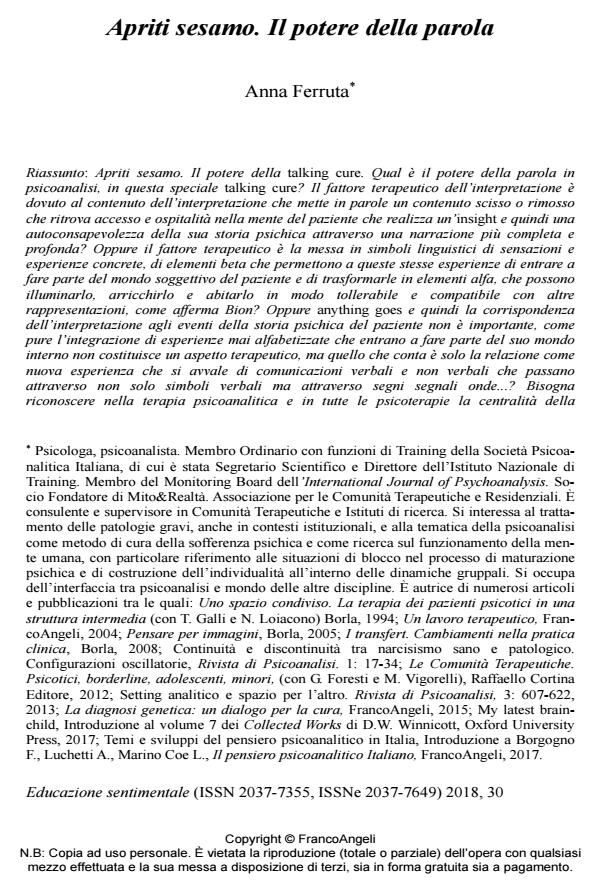Open sesame. The power of the word.
Journal title EDUCAZIONE SENTIMENTALE
Author/s Anna Ferruta
Publishing Year 2019 Issue 2018/30
Language Italian Pages 9 P. 36-44 File size 181 KB
DOI 10.3280/EDS2018-030006
DOI is like a bar code for intellectual property: to have more infomation
click here
Below, you can see the article first page
If you want to buy this article in PDF format, you can do it, following the instructions to buy download credits

FrancoAngeli is member of Publishers International Linking Association, Inc (PILA), a not-for-profit association which run the CrossRef service enabling links to and from online scholarly content.
Open sesame. The power of "talking cure". What is the power of the word in psychoanalysis, in this special talking cure? Is the therapeutic factor of the interpretation due to the content of the interpretation that puts into words a split or removed content that regains access and hospitality in the patient’s mind that realizes an insight and therefore a self-awareness of his psychic story through a more complete narration and deep? Or the therapeutic factor is the putting into linguistic symbols of concrete sensations and experiences, of beta elements that allow these same experiences to become part of the patien’s subjective world and transform them into alpha elements, which can illuminate, enrich and inhabit it in tolerable and compatible with other representations, as Bion says? Or "anything goes" and therefore the correspondence of the interpretation to the events of the patient’s psychic history is not important, as well as the integration of never literate experiences that become part of its internal world does not constitute a therapeutic aspect, but what matters is only the relationship as a new experience that uses verbal and non-verbal communications that pass through not only verbal symbols but through signs signals waves ...? We need to recognize in psychoanalytic therapy and in all psychotherapies the centrality of communication with speech: even when the relational exchange between patient and analyst takes precedence over other very primary communication levels, to proceed we always climb on the spaceship of the word, starting from the first case of the history of psychoanalysis, that of Anna O. A clinical example illustrates the mysterious power of the word, also free from context and narrative content, but capable of bringing out unconscious personal experiences
Keywords: Care, word, affection, feelings, free associations, integration.
Anna Ferruta, Apriti sesamo. Il potere della parola in "EDUCAZIONE SENTIMENTALE" 30/2018, pp 36-44, DOI: 10.3280/EDS2018-030006